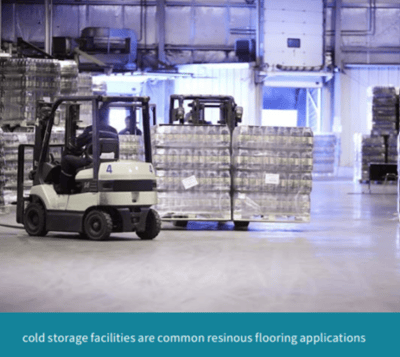The USDA has outlined general guidelines that require food & beverage processing floors to be “built of durable materials impervious to moisture and be cleaned and sanitized as necessary”. These floors should be designed to inhibit microbial growth wherever possible. In addition, state and municipal code may have additional requirements for areas such as a floor’s perimeter cove base and sloping to drains.

Based on that general criteria, there are many flooring alternatives that could satisfy USDA guidelines. However, there are several additional components that need to be evaluated.
Selecting the appropriate flooring systems for your application will account for daily wear and tear as well as exposure to periodic maintenance procedures
Grease & Other Contaminants
Exposure to grease introduces a host of issues for any food & beverage environment. It is important that any flooring system have the capability to stand up against grease contamination as well as the cleaning protocols in place to remove grease on a daily basis.
Non-Slip
Food & Beverage flooring systems should be designed to withstand heavy foot traffic and provide operators with adequate slip resistance. These floors must also not be so rough as they trap contaminants and become a maintenance challenge.
Equipment
Equipment, especially in commercial kitchen settings will greatly influence what flooring system is selected. Is the equipment on casters or is it stationary? How will areas under the equipment be treated and what precautions need to be accounted for near ovens or in food preparation stations? These are all questions that must be answered at the onset of any flooring project.
To get a more comprehensive understanding of food and beverage flooring download Resinwerks' free guide. We cover design considerations, curtailing bacteria growth, thermal shock implications, maintenance and long-term durability, and about polyurethane concrete in it. Download this valuable resource today.


 Previous article
Previous article